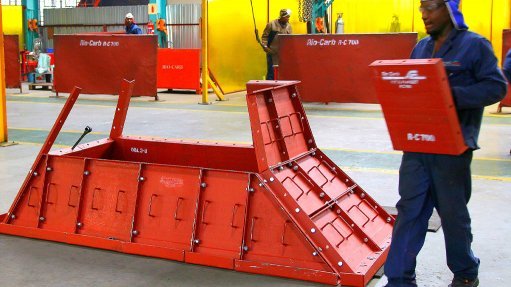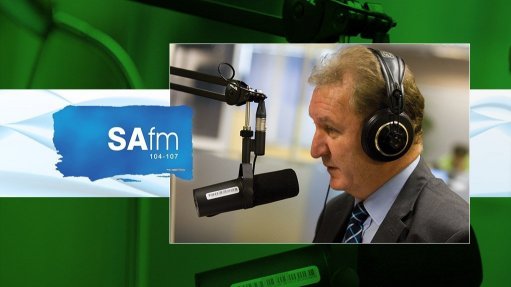Third mine disaster in a decade tests ESG boundaries in Brazil
Investors were swift to dump debt of Braskem after the Brazilian petrochemicals maker’s salt mine partially collapsed in December — a situation that has forced tens of thousands to evacuate the city of Maceio since 2019.
The selloff lasted less than a month before the prices recovered.
It was a rebound reminiscent of what happened in the wake of Samarco’s tailings dam collapse in 2015 and the rupture of a Vale dam in Brumadinho that killed 270 people in 2019: Any punishment levied by the debt markets was short lived.
Again and again, Brazil is showing just how quickly money managers are willing to shrug off disasters, raising questions about the effectiveness of environmental, social and governance guidelines. It’s an example of the fading enthusiasm for what was supposed to be a new era of responsible investing worldwide.
ESG-focused funds saw net global outflows for the first time last year as investors were quick to move their money into traditional asset classes where better returns awaited.
In the case of Braskem, they looked beyond the environmental and governance concerns.
“Once you get past that and really start digging under into the quality and the caliber of the company, this is a whole different ball game,” said Jennifer Gorgoll, an Atlanta-based portfolio manager at Neuberger Berman Group, which owns the bonds.
Braskem’s debt has rallied about 7% this year, even as the collapse of one of its old salt works threatens entire neighborhoods of Maceio, a town of one million people in northeastern Brazil. At one point, a section of the town was sinking as much as 5 centimeters (2 inches) an hour, according to a statement by the Civil Defense.
The environmental disaster initially cost Braskem its investment-grade status and sent its bonds due in 2030 down as much as 12.5 cents on the dollar at one point. Yet, the notes have trimmed losses to trade around 80 cents amid expectations the company’s balance sheet can absorb any undisclosed liabilities.
The Sao Paulo-based company, which has industrial conglomerate Novonor SA as its biggest shareholder, tapped global debt markets in September and has enough cash to meet upcoming debt maturities.
The concerns are now largely focused on other factors, such as a congressional probe that’s set to begin in February. Local authorities want Braskem to be hit with as much as 30-billion reais in potential liabilities. The company, which had been mining in Maceio for five decades, has already committed to paying 14-billion reais in compensation and relocation costs.
The lack of clarity around the total size of damages is keeping some investors away and likely limiting a further rally in the bond market.
“It’s very hard for an analyst to go to their portfolio manager and say there is sufficient certainty to step in at this time,” said Roger Horn, senior emerging-market strategist at Mariva Capital Markets in Miami. Even though most investors believe Braskem has a “sufficient war chest” of liquidity to deal with additional liabilities, the outlook remains murky, he said.
If history is a guide, bond buyers will eventually venture back.
REGULATORY SHORTCOMINGS
That’s what’s happened for Vale. Even after two major mining mishaps — one for its own dam and another for its Samarco joint venture — the bonds due in 2036 trade at around 108 cents on the dollar.
In fairness, Brazil doesn’t make it easy for investors to price in ESG risks, due to shortcomings in its regulatory oversight of the sector.
The Brumadinho accident five years ago was supposed to be a turning point. The government banned so-called upstream dams, which are the cheapest and most dangerous way to contain tailings waste. The mining regulator ordered the dismantling of such structures, a work that’s still in progress since dam interventions are risky.
But most congressional bills aiming at improving controls after the disasters are still pending analysis, including one that sets specific environmental licensing rules for miners. On top of that, local regulators and authorities remain overburdened with budget and staffing shortfalls, according to Suely Araujo, a researcher and senior public-policy specialist at Observatorio do Clima, a network of environmental organizations.
“It’s impossible to ensure that the mine will be frequently monitored once the environmental license is granted,” said Araujo, who spearheaded Brazil’s top environmental authority Ibama at the time of Samarco’s dam break.
For investors who do look at the world through the ESG lenses, that lack of regulatory oversight presents a risk, said Stephen Liberatore, head of ESG and impact, global fixed income at Nuveen.
“Are the regulations appropriate and are they being enforced?” he said.
On the other hand, the routs that follow disasters can be a buying opportunity, as Braskem has demonstrated.
The selloff after its loss of investment-grade status created an opportunity for Eduardo Ordonez, portfolio manager at BI Asset Management in Copenhagen, which owns the bonds.
“On weeks where weakness sets in, it could be a good opportunity to buy some,” he said. “Sentiment might remain a bit sluggish, but it is easy to see this one performing well in 2024.”
Comments
Press Office
Announcements
What's On
Subscribe to improve your user experience...
Option 1 (equivalent of R125 a month):
Receive a weekly copy of Creamer Media's Engineering News & Mining Weekly magazine
(print copy for those in South Africa and e-magazine for those outside of South Africa)
Receive daily email newsletters
Access to full search results
Access archive of magazine back copies
Access to Projects in Progress
Access to ONE Research Report of your choice in PDF format
Option 2 (equivalent of R375 a month):
All benefits from Option 1
PLUS
Access to Creamer Media's Research Channel Africa for ALL Research Reports, in PDF format, on various industrial and mining sectors
including Electricity; Water; Energy Transition; Hydrogen; Roads, Rail and Ports; Coal; Gold; Platinum; Battery Metals; etc.
Already a subscriber?
Forgotten your password?
Receive weekly copy of Creamer Media's Engineering News & Mining Weekly magazine (print copy for those in South Africa and e-magazine for those outside of South Africa)
➕
Recieve daily email newsletters
➕
Access to full search results
➕
Access archive of magazine back copies
➕
Access to Projects in Progress
➕
Access to ONE Research Report of your choice in PDF format
RESEARCH CHANNEL AFRICA
R4500 (equivalent of R375 a month)
SUBSCRIBEAll benefits from Option 1
➕
Access to Creamer Media's Research Channel Africa for ALL Research Reports on various industrial and mining sectors, in PDF format, including on:
Electricity
➕
Water
➕
Energy Transition
➕
Hydrogen
➕
Roads, Rail and Ports
➕
Coal
➕
Gold
➕
Platinum
➕
Battery Metals
➕
etc.
Receive all benefits from Option 1 or Option 2 delivered to numerous people at your company
➕
Multiple User names and Passwords for simultaneous log-ins
➕
Intranet integration access to all in your organisation

















